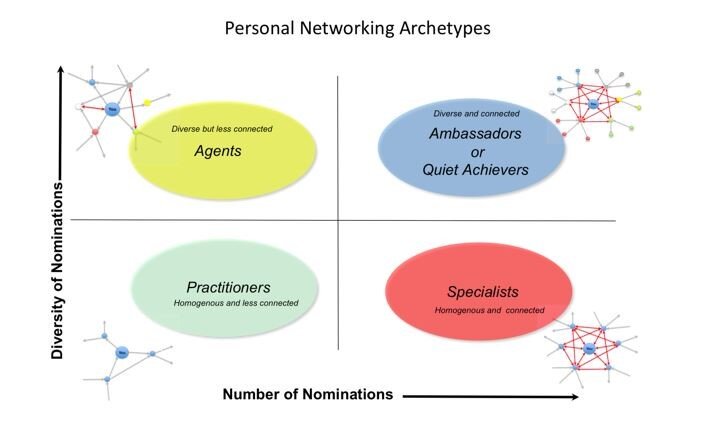Diversity is Essential but not Sufficient
Diversity is a big word in business today. We are preached to continuously about how important having diverse leadership is to improving your performance. HBR in their article on ‘Why Diverse teams are Smarter”, identify studies showing that diversity based on both ethnicity and/or gender can lead to above average returns. In our own work with networks, research has shown that individuals with more diverse personal networks are more likely to be promoted and succeed in their occupations. Although I’ve always thought that my own personal network was quite diverse, I received a wake-up call from the recent US elections. I was not aware of any of my fairly extensive US citizen network that were voting for Trump! So it does take a conscious effort to build and sustain a diverse network of connections. It’s far too easy to fall back to the comfortable relationships with those just like us.
But diversity alone is only a pre-condition to high performance. One must be able to exploit the diversity in one’s network to actually deliver the superior results that it promises. In a previous post we introduced our network performance framework, which identifies a balance between Diversity and Cohesion in networks, for maximizing performance:
In this framework we identify that high performers are those that can effectively balance their diverse connections i.e. identifying high potential opportunities, with their close connections, with whom they can collaborate to exploit those opportunities. From our project consulting experiences these people are either recognised as organisational ‘ambassadors’ or are completely invisible i.e. the quiet achievers. The fact that we find so few people in this quadrant is testimony as to how hard achieving this balance can be.
UGM Consulting explores this tension in their recent article on Innovation and the Diversity Paradox. They nominate the following attributes for those diverse networks that can successfully exploit the opportunities that they identify:
They have a sense of shared common goals and purpose;
They know how to genuinely listen to each other, seeking out elaboration and novel combinations;
They have high levels of mutual trust, so speaking up and disagreements can be had, risk free;
They have the skills to constructively explore alternatives and agree on a direction; and
There exists a strong co-operative atmosphere at both the team and enterprise levels.
For leaders this will mean actively enabling or creating such conditions. For the individual it could boil down to simply developing a diverse network that you actively consult with. At times you may leverage these relationships by enrolling others in selected joint activities, to bring about positive change in your own areas of influence.


